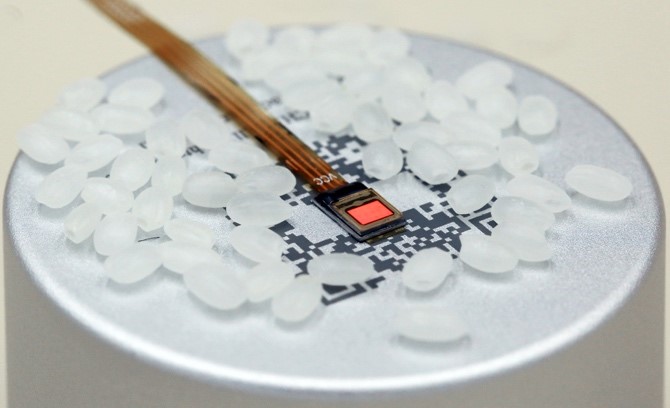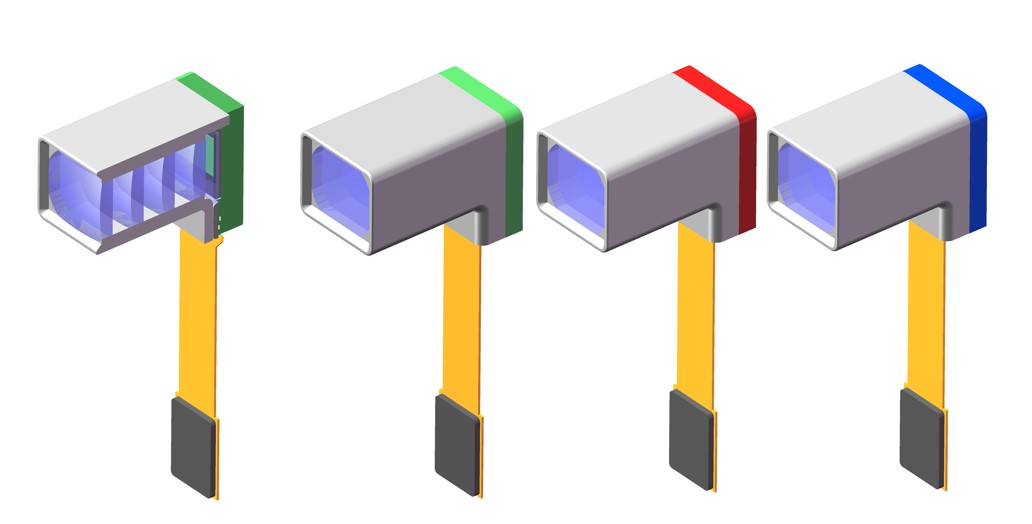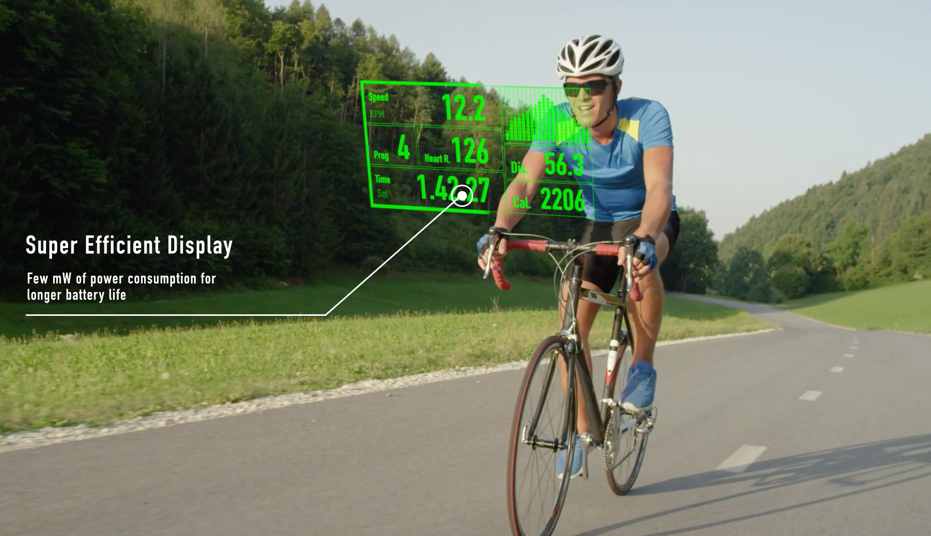JBD reported that it will release its JBD4UM480P Micro LED display series extending the AmµLED™ family in November this year. This series has a display area of 0.13-inch (3.3 mm) in diagonal and a resolution of 640X480. Approaching the size of a grain of rice (Figure 1), the display panel can be easily designed into a smart glass due to its ultra-compact footprint. The panels deliver luminance of 0.2 million nits, 2 million nits, and 0.15 million nits for red, green, and blue, respectively for a power consumption of only a few hundred mW under average operation conditions.

Figure 1. JBD's 0.13-inch panel with rice grains.
The JBD4UM480P IC backplane includes multiple functions that allow the display chip to operate at low power consumption mode for static images or images that change slowly. There is no need for extra bridge ICs, and the display data can be transferred directly from customers’ application system over SPI/QSPI interface. The IC backplane has a frame buffer and can support both global shutter and rolling shutter modes. It can also support over 5000 steps of global luminance levels. The image enhancement functions, including brightness uniformity compensation and gamma correction are implemented with the built-in OTP memory.
The JBD4UM480P Micro LED display series are fabricated using JBD’s proprietary hybrid integration technologies. JBD’s hybrid integration process also incorporates pixel level optics (Pixel Optics™) for each individual pixel, to facilitate efficient coupling with optics. JBD has currently over 120 patents and trademarks on Micro LED display panel design and manufacturing technologies.
The JBD4UM480P series is available in monochrome red, blue, and green panels. With these monochrome panels, two types of polychrome solutions are available to customers, a polychrome module projector and as a set of individual monochrome projectors. In the polychrome module projector, a x-cube prism is used to combine images from three individual monochrome panels attached to the faces of the X-cube prism. The combined light emits from the fourth surface of the X-cube and is projected by a group of lenses, as illustrated in Figure 2. The volume of the entire module is < 1.4 cubic centimeters, including the three panels, a X-cube prism, and the projection optics. The specification of the X-cube polychrome module is provided in Table 1.

Table 1. JBD's 0.13-inch polychrome module specifications.
The second solution uses three individual monochrome projectors, each of which has a volume of 0.4 cubic centimeters, as shown in Figure 3. In this case, diffractive waveguides with multiple layers and input are needed. For both types of modules, besides its advantages of small foot print and high brightness, there are no moving parts, no hazardous laser light sources, no organic materials, thereby making it safer and suitable for rugged operating conditions.

Figure 2. JBD's 0.13-inch polychrome module with a X-cube prism.

Figure 3. JBD's 0.13-inch monochrome projectors. From left to right: cut away view, green, red, and blue projectors.
To aid developers in their rapid development, evaluation and prototyping of JBD4UM480P Micro LED displays, JBD will release the following development kits.
• JBD4UM480P Micro LED Development kit with a single monochrome display
• JBD4UM480P Micro LED Development kit with monochrome Red, Green and Blue displays
• JBD4UM480P Micro LED Monochrome Projector Development kit
• JBD4UM480P Micro LED Polychrome Projector Development Kit
JBD4UM480P VGA Micro LED displays have been designed to meet the requirements for developers working in near-to-eye and projection based micro-display applications such as smart glasses for Information AR, Sports Optics, Holographic sights and the rapidly evolving AR goggles market for sports enthusiasts and athletes. These applications require information such as alerts, notifications, navigation info, reticles, performance metrics etc. in the form of crisp images with excellent outdoor as well as night time readability with the lowest of power consumption that can fulfilled with JBD’s Micro LED technology.

Figure 4. JBD's 0.13-inch panel application in sport optics.
“Having already launched high resolution and ultra-high pixel density Micro LED displays for applications requiring immersive content we found that there was a genuine need for an ultra-compact, ultra-bright and power efficient Micro LED display for applications focused on status and information based augmented and mixed reality” said Dr. Qiming Li, CEO and founder of Jade Bird Display. “Our breakthrough technology will now enable developers to create next-generation end products with the smallest and sleekest of form factors enhancing user comfort and fulfil the much-desired requirements for outdoor readability, excellent contrast and longer operating times between charges. Furthermore, our JBD4UM480P Micro LED displays will be competitively priced in tens of dollars which will see the end-products successfully breach the price sensitive consumer markets.”





 CN
TW
EN
CN
TW
EN










